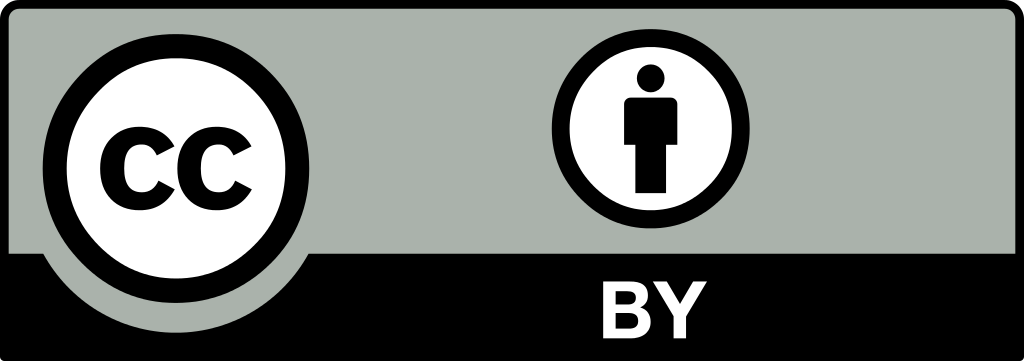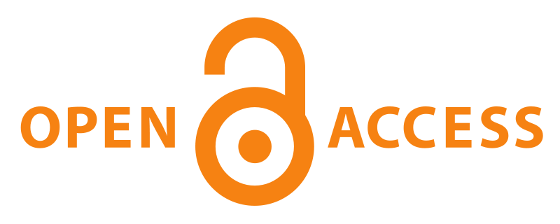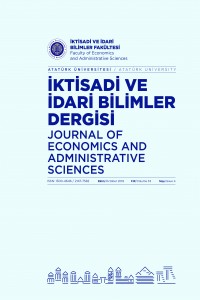Öz
Bu araştırmanın temel amacı meslektaş desteği ve ağır iş yükü arasındaki ilişkide iş-aile çatışmasının aracı etkisinin incelenmesidir. Oluşturulan model ve hipotezlerin test edilmesine yönelik olarak Türkiye’de bir devlet üniversitesinde çalışan araştırma görevlileri evren olarak belirlenmiştir. 401 araştırma görevlisinden anket tekniği kullanılarak elde edilen veriler SPSS 22 ve AMOS 20 programları kullanılarak analiz edilmiştir. Yapılan analizler sonucunda meslektaş desteğinin ağır iş yükü ve iş-aile çatışması üzerinde olumsuz etkisinin olduğu, iş-aile çatışmasının ağır iş yükü üzerinde olumlu bir etkisinin olduğu ve son olarak meslektaş desteği ile ağır iş yükü arasındaki ilişkide iş-aile çatışmasının tam aracı etkisinin bulunduğu tespit edilmiştir.
Anahtar Kelimeler
Meslektaş desteği Ağır iş yükü İş-aile çatışması Aracılık rolü
Kaynakça
- Ahuja, M., Chudoba, K., Kacmar, C., McKnight, D., & George, J. (2007). IT Road Warriors: Balancing Work-Family Conflict, Job Autonomy, and Work Overload to Mitigate Turnover Intentions. MIS Quarterly, 31(1), 1-17. doi:10.2307/25148778Copy
- Baron, Reuben M. ve David A. Kenny (1986). The Moderator–Mediator Variable Distinction in Social Psychological Research: Conceptual, Strategic, and Statistical Considerations, Journal of Personality and Social Psychology, 51(6), 1173.
- Bowen, G. L. (1988). Corporate supports for the family lives of employees: A conceptual model for program planning and evaluation. Family Relations, 37, 183-188.
- Cama, M. (2018). The Impact of Work Unit Level Perceptions of Career Development Opportunities, Coworker Support, Role Clarity, and Workload on Employee Engagement (Doctoral dissertation, Illinois Institute of Technology).
- Chou, R. J. A. (2006). Facility proprietary status, role overload, workplace support, and job satisfaction of direct care workers in assisted living. The University of Wisconsin-Madison.
- Çoban, A. E. (2005). Psikolojik danışmanlar için meslektaş dayanışması. Mersin Üniversitesi Eğitim Fakültesi Dergisi, 1(1).
- Dolcos, S. M. (2007). Managing life and work demands: The impact of organizational support on work-family conflict in public and private sectors.
- Findley, D., & Richardson, B. (2000). Draft Final Report: CNA Recruitment and Retention Project Evaluation. In Certified Nursing Assistant Recruitment and Retention Pilot Project Final Report. Iowa Caregivers Association for the Iowa Department of Human Services. http://www. iowacaregivers. org/PDFs/DHSreport. pdf.
- Garson, D. (2004), “Structural Equation Modeling”, http://www2.chass.ncsu.edu /garson
- Glanz, K., Rimer, B. K., Viswanath, K., & Ebooks Corporation. (2008). Health behavior and health education: Theory, research, and practice. Hoboken: John Wiley & Sons, Inc.
- Hart, S. G. & Staveland, L.E. (1988). Development of a multidimensional workload rating scale. Results of empirical and theoretical research. In P.A. Hancock & N. Meshkati (Eds.) Human Mental Workload. Amsterdam. The Netherlands: Elsevier.
- Hart, S. G., & Wickens, C. D. (1990). Workload assessment and prediction. In Manprint (pp. 257-296). Springer, Dordrecht. https://sozluk.gov.tr/?kelime=aile Erişim Tarihi: 03.09.2019)
- Huang, Y. H., Hammer, L. B., Neal, M. B., & Perrin, N. A. (2004). The relationship between work-to-family conflict and family-to-work conflict: A longitudinal study. Journal of Family and Economic Issues, 25(1), 79-100.
- Imoısılı, O.A., 1985. Task Complexity, Budget Style of Evaluating Performance and Managerial Stress: an Empirical Investigation. Ph.D. dissertation. University of Pittsburgh
- Jansen, N. W., Kant, I., Kristensen, T. S., & Nijhuis, F. J. (2003). Antecedents and consequences of work–family conflict: A prospective cohort study. Journal of occupational and Environmental Medicine, 45(5), 479-491.
- Kamerman, S. B., & Kahn, A. J. (1987). The responsive work- place. New York: Columbia University Press.
- Koçak, Ö. Ü. D., KERSE, Ö. Ü. G., & YÜCEL, İ. ÇALIŞANLAR AŞIRI İŞ YÜKLERİNDEN ÖTÜRÜ AİLELERİ İLE ÇATIŞMA YAŞARLARMI? HAVACILIK SEKTÖRÜNDE BİR İNCELEME.
- Kokoroko, E., & Sanda, M. A. (2019). Effect of Workload on Job Stress of Ghanaian OPD Nurses: The Role of Coworker Support. Safety and Health at Work.
- Kossek, E. E., Pichler, S., Bodner, T., & Hammer, L. B. (2011). Workplace social support and work–family conflict: A meta‐analysis clarifying the influence of general and work–family‐specific supervisor and organizational support. Personnel psychology, 64(2), 289-313.
- Maslach C, Leiner MP. The truth about burnout: How organizations cause personel stres and what to do about it. In. West JA, West ML (eds), The Truth About Burnout. 1st ed. San Francisco CA, Jossey Bass,1997: p 38-39.
- McCroskey, J. (1982). Work and families: What is the employ- er's responsibility? PersonnelJournal, 61, 30-38
- Meydan, C. H. ve Şeşen, H. (2011). Yapısal Eşitlik Modellemesi AMOS Uygulamaları.Ankara: Detay Yayıncılık.
- Netemeyer, R. G., Boles, J. S., & McMurrian, R. (1996). Development and validation of work–family conflict and family–work conflict scales. Journal of applied psychology, 81(4), 400.
- Ng, T. W., & Sorensen, K. L. (2008). Toward a further understanding of the relationships between perceptions of support and work attitudes: A meta-analysis. Group Organization & Management, 33, 243-268.
- Noelker, L. S., Ejaz, F. K., Menne, H. L., & Jones, J. A. (2006). The impact of stress and support on nursing assistant satisfaction with supervision. Journal of Applied Gerontology, 25(4), 307-323.
- Noelker, L. S., Ejaz, F. K., Menne, H. L., & Jones, J. A. (2006). The impact of stress and support on nursing assistant satisfaction with supervision. Journal of Applied Gerontology, 25(4), 307-323.
- Özen, Y., & Gül, A. (2007). Sosyal ve eğitim bilimleri araştirmalarinda evren-örneklem sorunu. Atatürk Üniversitesi Kazım Karabekir Eğitim Fakültesi Dergisi, (15), 394-422.
- Podsakoff, P. M., MacKenzie, S. B., Lee, J. Y., ve Podsakoff, N. P. (2003), “Common Method Biases in Behavioral Research: A Critical Review Of The Literature and Recommended Remedies”, Journal of Applied Psychology, 88(5), 879.
- Raykov, T. ve Marcoulides, G.A. (2006). A First Course in Structural Equation Modeling. Mahwah, New Jersey, Lawrence Erlbaum Associates, Inc.
- Rhoades, L., Armeli, S., Eisenberger, R., (2001), “Affective Commitment to the Organization: The Contribution of Perceived Organizational Support”, Journal of Applied Psychology, Vol. 86, No.5, ss. 825- 836.
- Rousseau, V., Aube, C., & Savoie, A. (2006). Teamwork behaviors: A review and an integration of frameworks. Small Group Research, 37(5), 540-570.
- Rousseau, V., Salek, S., Aubé, C., & Morin, E. M. (2009). Distributive justice, procedural justice, and psychological distress: The moderating effect of coworker support and work autonomy. Journal of Occupational Health Psychology, 14(3), 305.
- Schumacker, R. E. ve Lomax, R. G. (2004). A Beginner's Guide to Structural Equation Modeling,New Jersey: Lawrence Erlbaum Associates.
- Scott, S. G., & Bruce, R. A. (1994). Determinants of innovative behavior: A path model of individual innovation in the workplace. Academy of management journal, 37(3), 580-607.
- Shirom, A., Toker, S., Alkaly, Y., Jacobson, O., & Balicer, R. (2011). Work-based predictors of mortality: A 20-year follow-up of healthy employees. Health Psychology, 30(3), 268.
- Spector, P. E., & Jex, S. M. (1998). Development of four self-report measures of job stressors and strain: interpersonal conflict at work scale, organizational constraints scale, quantitative workload inventory, and physical symptoms inventory. Journal of occupational health psychology, 3(4), 356.
- Tabachnick, B. G., & Fidell, L. S. (2007). Using multivariate statistics. Allyn & Bacon/Pearson Education.
- Tavşancıl, E. (2014). Tutumların Ölçülmesi ve SPSS ile Veri Analizi , (4. Baskı), Nobel Akademi, Ankara.
- Thomas, L. T., & Ganster, D. C. (1995). Impact of family-supportive work variables on work-family conflict and strain: A control perspective. Journal of applied psychology, 80(1), 6.
- Tortez, L. (2017). The Importance of Social Support to the Work-Family Conflict and Well-Being Relationship for Healthcare Workers. Hofstra University.
- Van Daalen, G., Willemsen, T. M., & Sanders, K. (2006). Reducing work–family conflict through different sources of social support. Journal of Vocational Behavior, 69(3), 462-476.
- Van Dyck, S. E. (2013). Horizontal workplace aggression and coworker social support related to work-family conflict and turnover intentions.
- Voydanoff, P. (1987). Work andfamily life. Beverly Hlills, CA: Sage
- Wang, M., Liu, S., Zhan, Y., & Shi, J. (2010). Daily work–family conflict and alcohol use: Testing the cross-level moderation effects of peer drinking norms and social support. Journal of Applied Psychology, 95(2), 377.
- Warner, M. A. (2012). Understanding how coworkers impact work-to-family conflict and enrichment and job-related outcomes. ProQuest Information & Learning.
- Warren, J. A., & Johnson, P. J. (1995). The impact of workplace support on work-family role strain. Family relations, 163-169.
- Weıner, J.S., ”The measurement of human workload”, Ergonomics, 25, 953-965, 1982.
- Yılmaz, F. (2019) .‘İş-aile çatışması ve kadın, Kadının iş yaşamı ve etik’ içinde, Ankara, Nobel yayınları
- Zhou, J., & George, J. M. (2001). When job dissatisfaction leads to creativity: Encouraging the expression of voice. Academy of Management journal, 44(4), 682-696.
Ayrıntılar
| Birincil Dil | Türkçe |
|---|---|
| Bölüm | Makaleler |
| Yazarlar | |
| Yayımlanma Tarihi | 25 Ocak 2020 |
| Yayımlandığı Sayı | Yıl 2020 Cilt: 34 Sayı: 1 |
Cited By
Kolektif Öğretmen Kültürü Ölçeğinin Türkçeye Uyarlanması
Dokuz Eylül Üniversitesi Buca Eğitim Fakültesi Dergisi
https://doi.org/10.53444/deubefd.1172983





